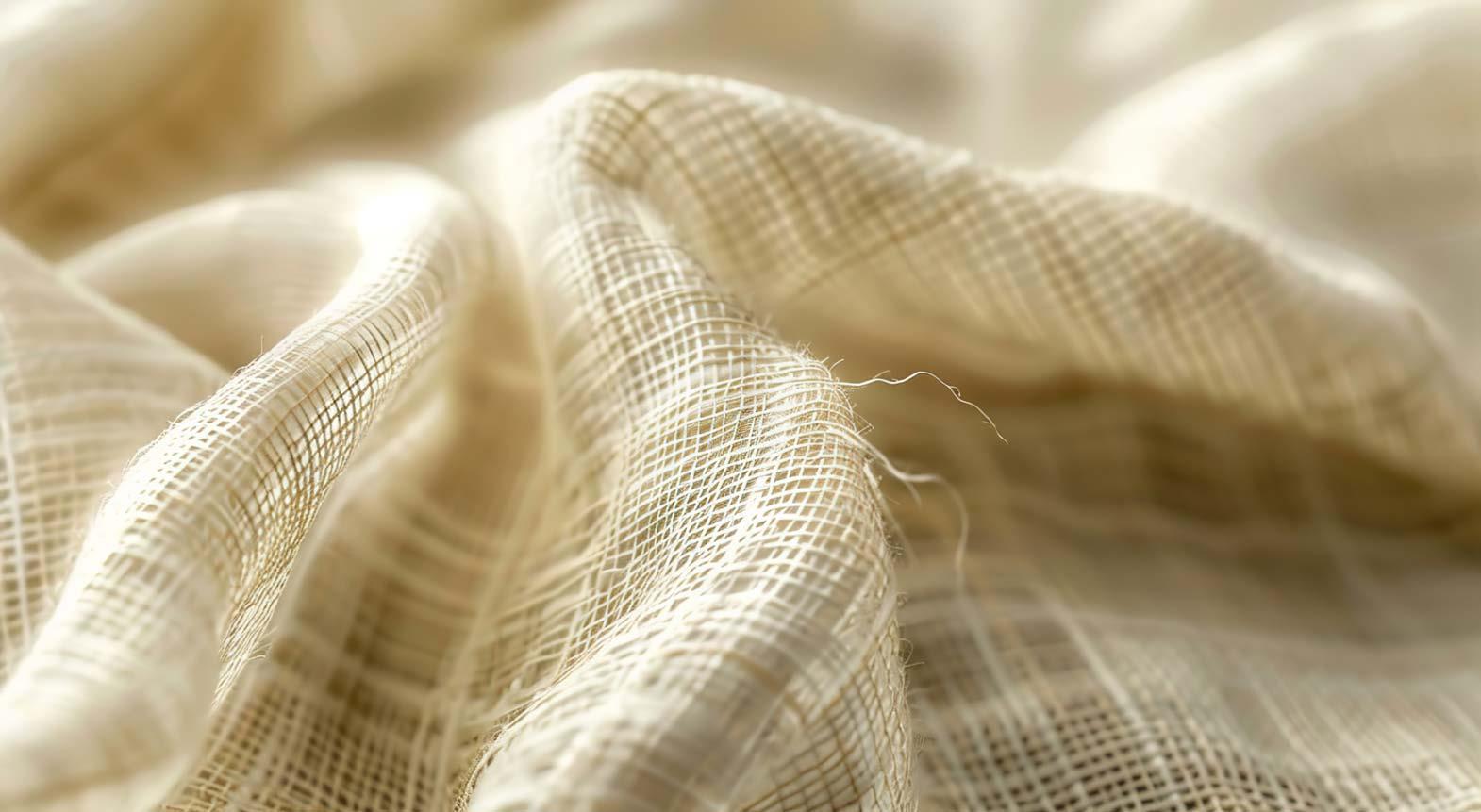Biomass fibers are obtained from renewable biomass resources such as natural animal and plant fibers, recycled fibers and synthetic fibers. As resources of textile raw materials are diminishing, developing biomass fibres will prove to be an important step in expanding the market of sustainable textiles. Also, using biomass fibres will be an effective method in establishing sustainable fibres in the textile industry.
Natural fibers are produced in all the countries of the world. Various products like textiles, ropes, brushes, carpets, mattresses, mats, paper, board materials, etc. are manufactured from it. The development of renewable, biodegradable biomass fiber also promotes the growth of the chemical fiber industry. Currently in China, the biomass fiber industry has developed considerably. It produces over 200 million tons of biomass fibres. With such large biomass fiber resources, it paves the way to significant development of this industry.
Gentle, uneven and slightly rough textured banana fibre is the new arrival in the eco-friendly market. Banana cultivation is done around four times a year. Earlier, after the harvest the stems were left to decompose. Now, these stems are recycled and fibrous material is extracted from them. This raw biomass material can be termed as the 'gen-next' fibre considering its properties and usefulness.
Banana fibers are naturally uneven and coarse due to the shape and density of its fibers. It has a good moisture and water absorbing property. The unique feature of the fiber is that it is slightly rough which it inherits naturally from the banana tree. Although it absorbs sweat quickly, the material remains dry.
Shirts made from banana fibers are known for their comfort, chiefly when worn in summer. It also eases the market situation arising due to the shortage of cotton. Cotton, as a natural fiber has always remained in high demand. However, the farmers change their preference and sow different crops like wheat, soybeans, corn, etc. depending on the market conditions.
In the near future, due to the shortage of food crops and increased use of bio-fuels, cotton cultivation will be replaced by other grains. Therefore, shortage of cotton is anticipated globally. On the other hand, around 100 million tons of bananas are cultivated yearly, all over the world. The stems are cut off as they are not useful. This results into a billion tons of stems that are left to rot. With time they merge into the soil, but from the stems high quality fiber can be obtained.
Hence, banana plantations do not require new land for its cultivation as they have been already established.
Plant biomass has large renewable sources of diverse biopolymers like cellulose, hemicelluloses, lignins and pectins. Cellulose is the most recognized raw material, and its fibre has valuable properties like good strength, stiffness, low density and biodegradability. Research is being carried out to develop technologies that can produce polymeric fibrous materials from the raw materials obtained from different types of plant biomass.
Biomass fibres can be obtained from various types of plant biomass such as stems of hemp and flax. The stems are put into a complex treatment process from which cellulose pulp in form of fibres are obtained. Tests are being carried out to produce new, useful materials like sanitary cloth, sweat absorbing fabric, noise absorbing materials, filtration materials, geo and agro textiles from these fibres using various techniques.
Hemp is a good substitute for cotton and can be used to manufacture clothes. Hemp fibre has 10 times more strength than cotton, and can be used to manufacture all kinds of garments. Moreover, cotton requires warm climate to grow and consumes large amount of water, whereas hemp needs little water and can grow in any moderate climate.
Hemp does not need pesticides as it naturally resists weed growth, and have little threat of being infected by insects. On the other hand, large amount of pesticides are used on cotton. According to a report in U.S., 50% of the all the pesticides are used to kill insects on cotton. If cotton is replaced by hemp, the use of pesticides can be significantly reduced. Besides, hemp produces double the amount of fibre per acre land compared to cotton.
One can find many stores in U.S. selling hemp products like clothing, cosmetics, hemp oil, soap, paper, etc. Surprisingly, these products were not in existence till 1992, and today they are in high demand. At present, variety of garments such as pants, denim jeans, jackets, dresses, shorts, etc. made from 100% hemp are available.
In a sports gear trade show held in Munich in 2012, renowned textile companies had participated. There was a declaration to introduce 100% bio-based fabrics in the year 2013-14. They claimed that leading brands in the world will come up with 'eco shells' (water- proof clothing) for outdoor use that will be lightweight and comfortable. Moreover, the Japanese fibre company has developed polyamide fibres and yarns from biomass through a process called 'Hybrid Engineering'.
They have indicated the use of biomass polyamide based fabrics to produce efficient 'eco shells'. They claim that the technical features and performance of the biomass polyester and polyamide fibres are equivalent to the usual fabrics available in the market. Such fabrics are already produced but in combination with other fibres. However, efforts are made to produce 100% bio-based fabric.
There has been rapid advancement in the development of biomass fibres used in making textiles. Considering the scarcity of cotton, the biomass fibres will work as a great replacement in the future to create eco-friendly textiles. With upcoming technologies and companies coming ahead to experiment and produce functional biomass fabrics and clothing, this sustainable fibre has a bright future in the coming years.
References:
1. Nisshinbo-textile.co.jp
2. Gdna.com.cn
3. Science24.com
4. Orangehalo.com
5. Nemeton.com








Comments